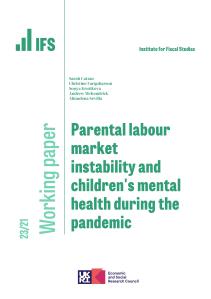Figures from the DfE show that the number of two-year-olds taking up a free entitlement place fell to just under 125,000 in 2022-23: 8 per cent lower than in 2021-22, and a record low since the full two-year-old offer was introduced in 2014.
Despite this, the take-up rate reached an all-time high last year, with 74 per cent of eligible twos accessing a place.
There are two trends underlying these seemingly contradictory numbers.
First, big demographic changes are afoot: the number of young children in England has been falling sharply.
In 2014-15, when the two-year-old offer was introduced, there were just over 700,000 two-year-olds in England.
By last year, this population had fallen by nearly 100,000. That's a huge demographic change for settings to absorb in less than a decade.
But falling numbers of eligible two-year-olds do not just reflect demographic trends. They are also affected by changes in who is eligible for the offer.
The two-year-old offer is a passported entitlement, meaning that in most cases a child's eligibility is determined by their parents’ eligibility for other means-tested benefits.
Many of these benefits involve income caps; for example, a family claiming Child Tax Credit needs to have an annual income below £16,190 to be eligible for the two-year-old offer.
This threshold has been frozen in cash terms since 2014. If it had instead grown in line with average weekly earnings, it would now be nearly £22,500.
Universal Credit has also brought major change. Assessing which types of families would financially ‘win’ or ‘lose’ from the reform is complicated, but other changes (like more stringent requirements to look for work) could reduce take-up.
Taken together, frozen eligibility thresholds and reforms in the benefits system mean that eligibility for the two-year-old offer has become much less generous.
In 2014-15, 38 per cent of two-year-olds were eligible for a place. That fell to 30 per cent in 2021-22, and to 27 per cent last year.
Set against that, the share of eligible children taking up their two-year-old place has been rising, offsetting some of these pressures. We estimate that the rising take-up rate meant about 3,400 additional places last year.
From a provider's perspective, of course, what matters is often the total number of places used – as the eligible population shrinks, some nurseries may find that it gets harder to fill spots.
That could help ease the pressure where demand outstrips supply, but it also raises the risk of settings struggling to attract as many children as they can look after.










